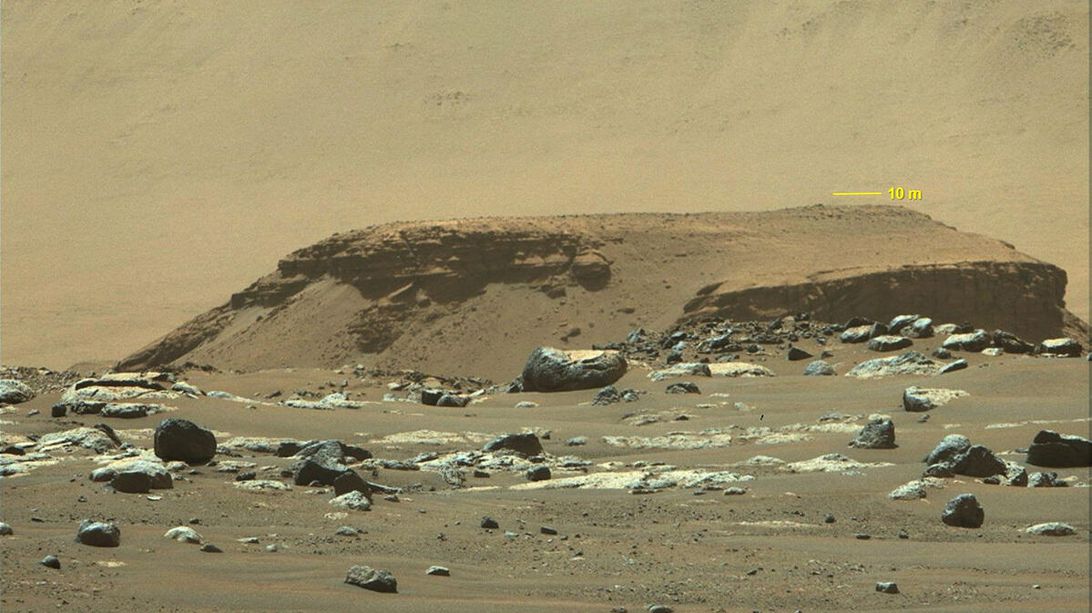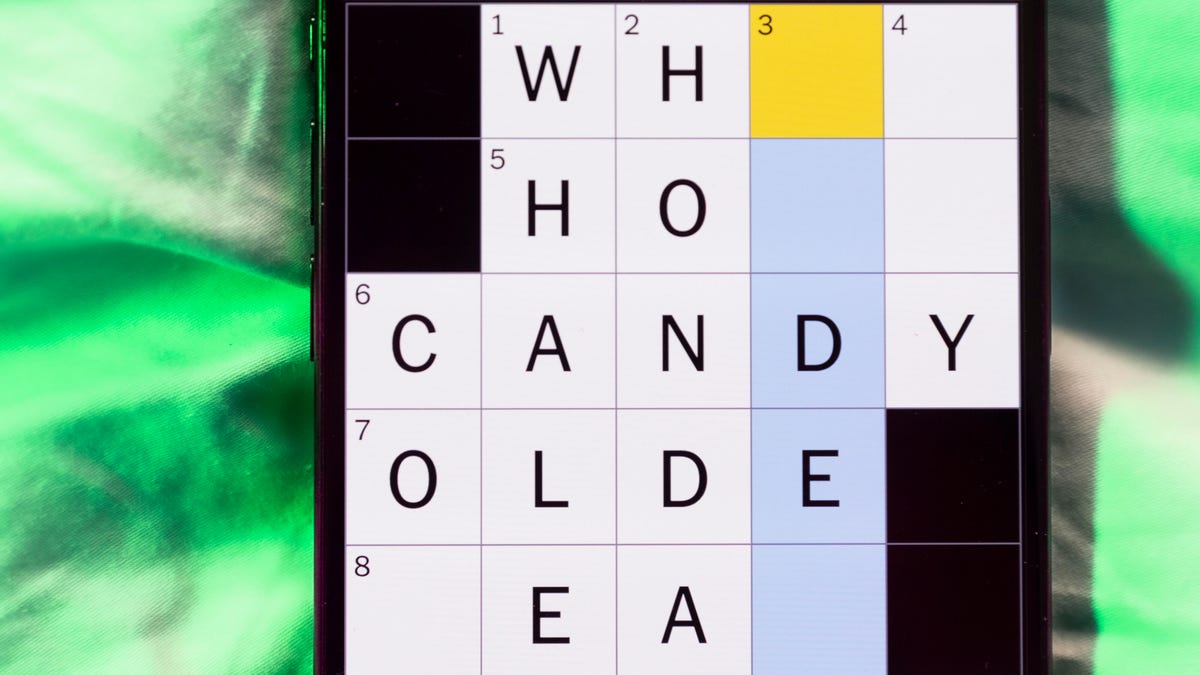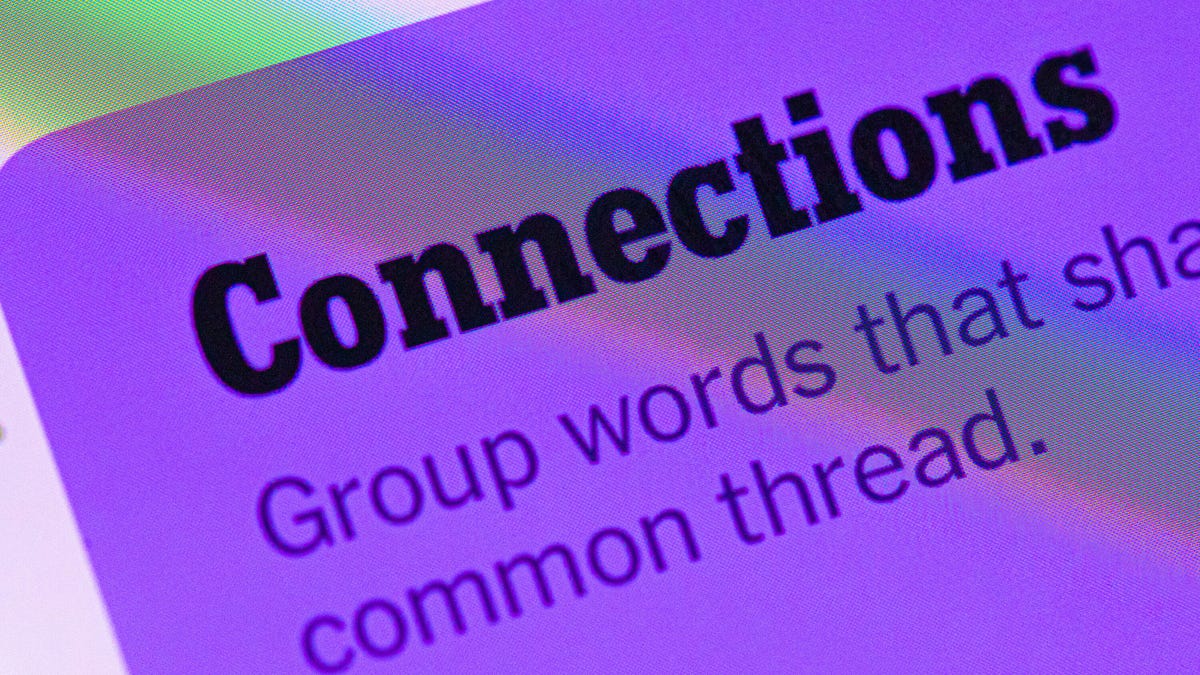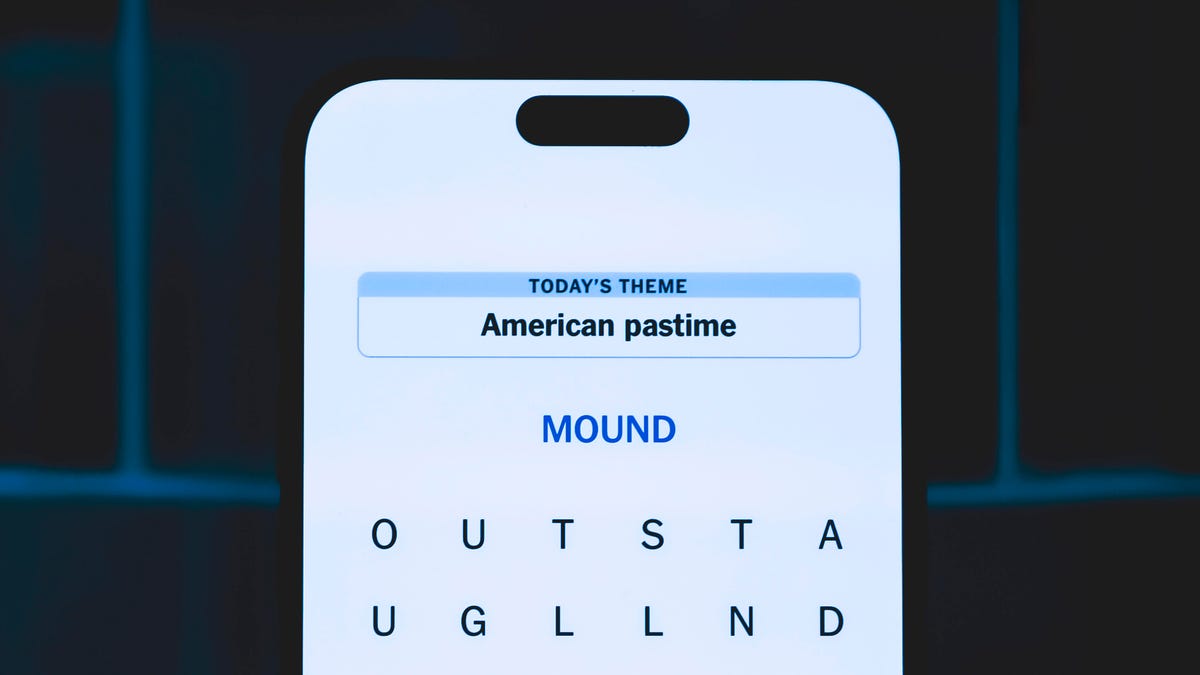Technologies
Huge ancient lake on Mars could be hiding fossilized signs of alien life
An ancient river delta at the site where NASA’s Perseverance rover landed might hold proof of past life on Mars.

Mars rovers may soon get a few new checkpoints to explore. Geologists say specific areas of an ancient river delta near where NASA’s Perseverance rover is stationed could hold fossilized evidence of extraterrestrial life.
Though they don’t expect to find any bug-eyed, green aliens, they do say vital organic compounds that suggest the presence of past life might exist there, waiting to be uncovered.
The crew of researchers behind the new study, published on Oct. 7 in the journal Science, dissected photographs taken by NASA’s recently landed Perseverance rover and uncovered ways that water flowed on Mars billions of years ago.
Their analysis unveiled spots on the arid orb that could house the highly sought-after biosignatures.
«We know that water was running on the surface at one point in the past, but we don’t know the duration of this activity,» said the study’s lead author, Nicolas Mangold, a geologist at the University of Nantes in France.
NASA’s Perseverance and the legend of Jezero
Once upon a time in space, Mars wasn’t a dry and dangerous world. It was covered in fresh rivers and lakes, a lot like those on Earth. And where there’s water, there could be life.
The vast bodies of H2O dried up eons ago as the formerly blue planet’s delicate atmosphere disappeared. This turned the environment into the inhospitable land we’ve come to know today.
Scientists have long been intrigued by the past existence of water on Mars. That’s why NASA sent Perseverance to traverse the planet in hopes of finding fingerprints of life. More specifically, they sent the rover to a huge crater called Jezero.
Believed to have once been flooded by water, the Jezero crater houses an ancient river delta — a delta that could be holding signs of alien life.
Deltas are landforms generated by rock and sediment swept up by a river’s flow. That stream often carries organic molecules and bacteria in its path, which means Jezero’s delta could easily contain an accumulation of such materials.
In other words, it could contain fossilized building blocks of life.
With that in mind, the study team’s proposed points of interest for locating evidence of life on Mars are all anchored by that delta. Initially, Mangold says, he hoped Perseverance would catch clear images of the spot, but unfortunately, Percy is a bit too far from the old river for that.
«Despite our disappointment,» he said, «we tried to look at the delta from a distance using our best cameras, and that gave really wonderful results.»
Clues from Kodiak
Surprisingly, the researchers didn’t find the prized areas just by analyzing Jezero’s main delta. They observed a nearby butte, or mound of rock, dubbed Kodiak. Kodiak is a part of the delta that’s slightly farther away.
«You can imagine that the delta was a little bit extended to the south and to the east, then erosion removed some of the material,» said Mangold. «But Kodiak is, by miracle, preserved.»
Kodiak serves as a geologic representation of the main river delta’s features. The stratigraphy, its rock layers, is relatively easy to see from afar, according to the researchers.
«By understanding the stratigraphy at Kodiak, it enables us to identify the deposits which are the most likely of interest for life preservation,» Mangold said.
He described the team’s first look at the photos as a «shock.»
«The first image is actually [one] where we can see boulders,» he said. «A delta fault … is not supposed to get some big boulders. It’s supposed to be consistent.»
Those boulders, he said, mean Jezero’s river delta is what’s called a Gilbert-type delta. These are formed with stronger water flow such as waves and tides, like that found in a lake. Thus, the team believes the river’s flow suddenly grew more intense during the course of its life.
«A big question for us,» Mangold said, «is to understand why there was this change of hydrological activity, because that is probably the signature of a change of climate.»
Kodiak also offered insight into how high the ancient body of water rose. Mangold says it would’ve been about 8,202 feet (2,500 meters) high, based on striations of rocks in the butte. That elevation varied over time, he says, which is also consistent with the idea the river advanced into a lake.
«That kind of observation is really key,» he explained. «Because it shows that there was a lake in Jezero, no doubt about that … in addition, the change from horizontal bedding to the faults, which are deep in layers, indicates the past water level.»
In the end, all this knowledge led Mangold’s team to isolate places where remnants of life could be found — deeper layers of Kodiak that likely have mud-dominated residue as well as sand grains. These types of sediments have been known to contain organic, life-sustaining molecules.
«Kodiak is not easily accessible by the rover because it’s a bit vertical facing,» Mangold noted.
«But we have identified some locations on the main delta fault where we can access similar types of layers. Those locations are some of our preferred targets for future rover travels.»
Technologies
Today’s NYT Mini Crossword Answers for Sunday, Nov. 16
Here are the answers for The New York Times Mini Crossword for Nov. 16.

Looking for the most recent Mini Crossword answer? Click here for today’s Mini Crossword hints, as well as our daily answers and hints for The New York Times Wordle, Strands, Connections and Connections: Sports Edition puzzles.
Need some help with today’s Mini Crossword? For me, 7-Across was a bit of a stumper, but I eventually solved it. Read on for the answers. And if you could use some hints and guidance for daily solving, check out our Mini Crossword tips.
If you’re looking for today’s Wordle, Connections, Connections: Sports Edition and Strands answers, you can visit CNET’s NYT puzzle hints page.
Read more: Tips and Tricks for Solving The New York Times Mini Crossword
Let’s get to those Mini Crossword clues and answers.
Mini across clues and answers
1A clue: Cars that stop at Supercharger stations
Answer: TESLAS
7A clue: What «e-» can mean
Answer: ONLINE
8A clue: Words that might begin the name of a quaint English inn
Answer: YEOLDE
9A clue: What «E» can mean
Answer: EMPTY
10A clue: Easter egg colorings
Answer: DYES
Mini down clues and answers
1D clue: Messed (with)
Answer: TOYED
2D clue: Ally’s opposite
Answer: ENEMY
3D clue: What «m» stands for in the equation «y = mx + b»
Answer: SLOPE
4D clue: Musical cadences of speech
Answer: LILTS
5D clue: Samberg of «Brooklyn Nine-Nine»
Answer: ANDY
6D clue: «___ what I did there?»
Answer: SEE
Technologies
Today’s NYT Connections Hints, Answers and Help for Nov. 16, #889
Here are some hints — and the answers — for the NYT Connections puzzle for Nov. 16, #889.

Looking for the most recent Connections answers? Click here for today’s Connections hints, as well as our daily answers and hints for The New York Times Mini Crossword, Wordle, Connections: Sports Edition and Strands puzzles.
Today’s NYT Connections puzzle is a fun one. As a pop-culture junkie and game lover, I enjoyed the purple category. If you need help sorting the answers into groups, you’re in the right place. Read on for clues and today’s Connections answers.
The Times now has a Connections Bot, like the one for Wordle. Go there after you play to receive a numeric score and to have the program analyze your answers. Players who are registered with the Times Games section can now nerd out by following their progress, including the number of puzzles completed, win rate, number of times they nabbed a perfect score and their win streak.
Read more: Hints, Tips and Strategies to Help You Win at NYT Connections Every Time
Hints for today’s Connections groups
Here are four hints for the groupings in today’s Connections puzzle, ranked from the easiest yellow group to the tough (and sometimes bizarre) purple group.
Yellow group hint: Different strokes for different folks.
Green group hint: Ho-hum.
Blue group hint: Flags often qualify.
Purple group hint: Do not pass Go.
Answers for today’s Connections groups
Yellow group: Technique.
Green group: Run-of-the-mill.
Blue group: Stripy things.
Purple group: Words on Monopoly squares.
Read more: Wordle Cheat Sheet: Here Are the Most Popular Letters Used in English Words
What are today’s Connections answers?
The yellow words in today’s Connections
The theme is technique. The four answers are approach, method, philosophy and school.
The green words in today’s Connections
The theme is run-of-the-mill. The four answers are banal, everday, humdrum and pedestrian.
The blue words in today’s Connections
The theme is stripy things.The four answers are barcode, IBM logo, rugby shirt and zebra.
The purple words in today’s Connections
The theme is words on Monopoly squares. The four answers are avenue, parking, railroad and tax.
Technologies
Today’s NYT Strands Hints, Answers and Help for Nov. 16 #623
Here are hints — and answers — for the NYT Strands puzzle for Nov. 16, No. 623.

Looking for the most recent Strands answer? Click here for our daily Strands hints, as well as our daily answers and hints for The New York Times Mini Crossword, Wordle, Connections and Connections: Sports Edition puzzles.
Today’s NYT Strands puzzle is tough. It’s a weird theme, and some of the answers are difficult to unscramble, so if you need hints and answers, read on.
I go into depth about the rules for Strands in this story.
If you’re looking for today’s Wordle, Connections and Mini Crossword answers, you can visit CNET’s NYT puzzle hints page.
Read more: NYT Connections Turns 1: These Are the 5 Toughest Puzzles So Far
Hint for today’s Strands puzzle
Today’s Strands theme is: Around it goes.
If that doesn’t help you, here’s a clue: They’re often on a roll.
Clue words to unlock in-game hints
Your goal is to find hidden words that fit the puzzle’s theme. If you’re stuck, find any words you can. Every time you find three words of four letters or more, Strands will reveal one of the theme words. These are the words I used to get those hints but any words of four or more letters that you find will work:
- CARE, SCARE, CRASS, SWAT, PELL, HELL, SCAR, HALT, STENT, HALTS, TENT, POLL, LOTS
Answers for today’s Strands puzzle
These are the answers that tie into the theme. The goal of the puzzle is to find them all, including the spangram, a theme word that reaches from one side of the puzzle to the other. When you have all of them (I originally thought there were always eight but learned that the number can vary), every letter on the board will be used. Here are the nonspangram answers:
- FOIL, SCARF, SHAWL, STOLE, FLATBREAD, CELLOPHANE
Today’s Strands spangram
Today’s Strands spangram is THATSAWRAP. To find it, start with the T that’s three letters up from the bottom of the far-left row, and wind down, over and then up.
-

 Technologies3 года ago
Technologies3 года agoTech Companies Need to Be Held Accountable for Security, Experts Say
-

 Technologies3 года ago
Technologies3 года agoBest Handheld Game Console in 2023
-

 Technologies3 года ago
Technologies3 года agoTighten Up Your VR Game With the Best Head Straps for Quest 2
-

 Technologies4 года ago
Technologies4 года agoBlack Friday 2021: The best deals on TVs, headphones, kitchenware, and more
-

 Technologies4 года ago
Technologies4 года agoVerum, Wickr and Threema: next generation secured messengers
-

 Technologies4 года ago
Technologies4 года agoGoogle to require vaccinations as Silicon Valley rethinks return-to-office policies
-

 Technologies4 года ago
Technologies4 года agoOlivia Harlan Dekker for Verum Messenger
-

 Technologies4 года ago
Technologies4 года agoiPhone 13 event: How to watch Apple’s big announcement tomorrow
